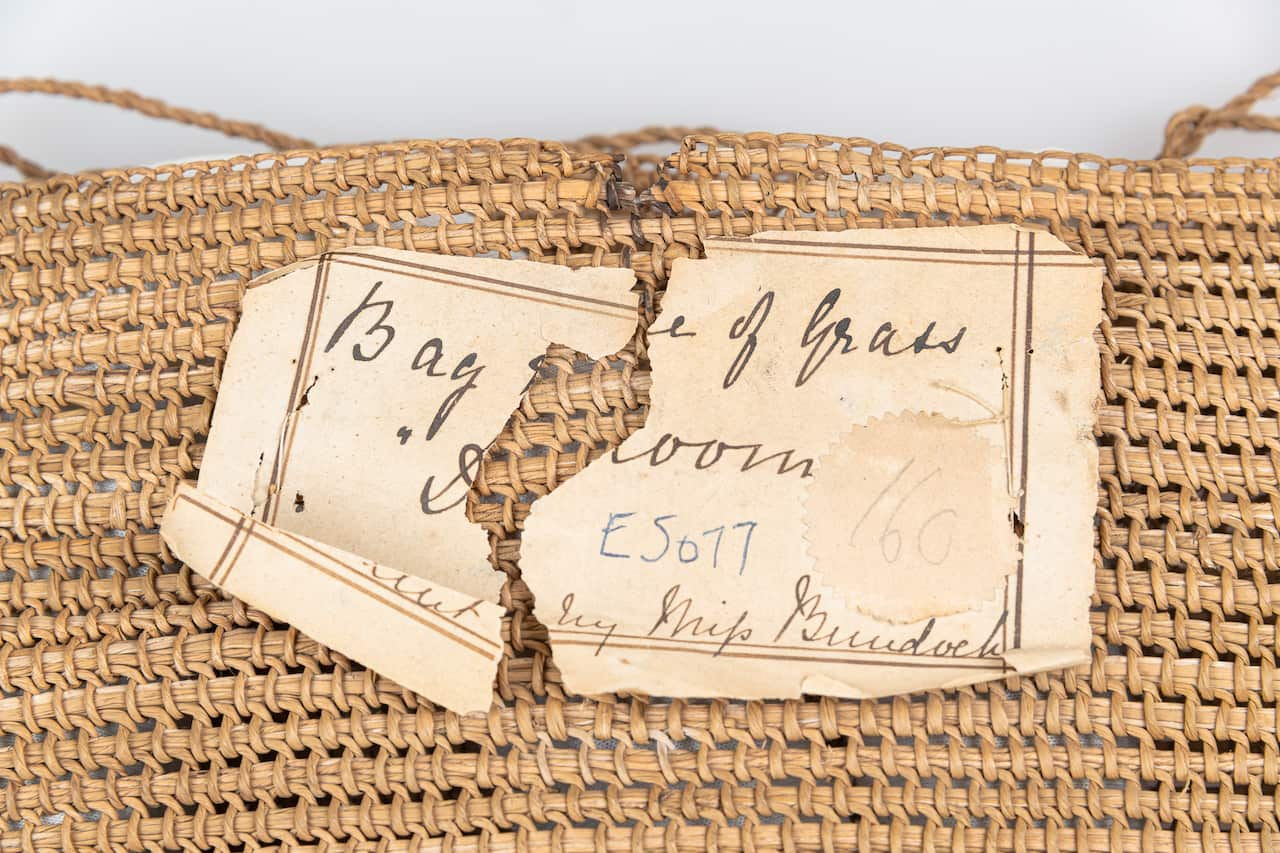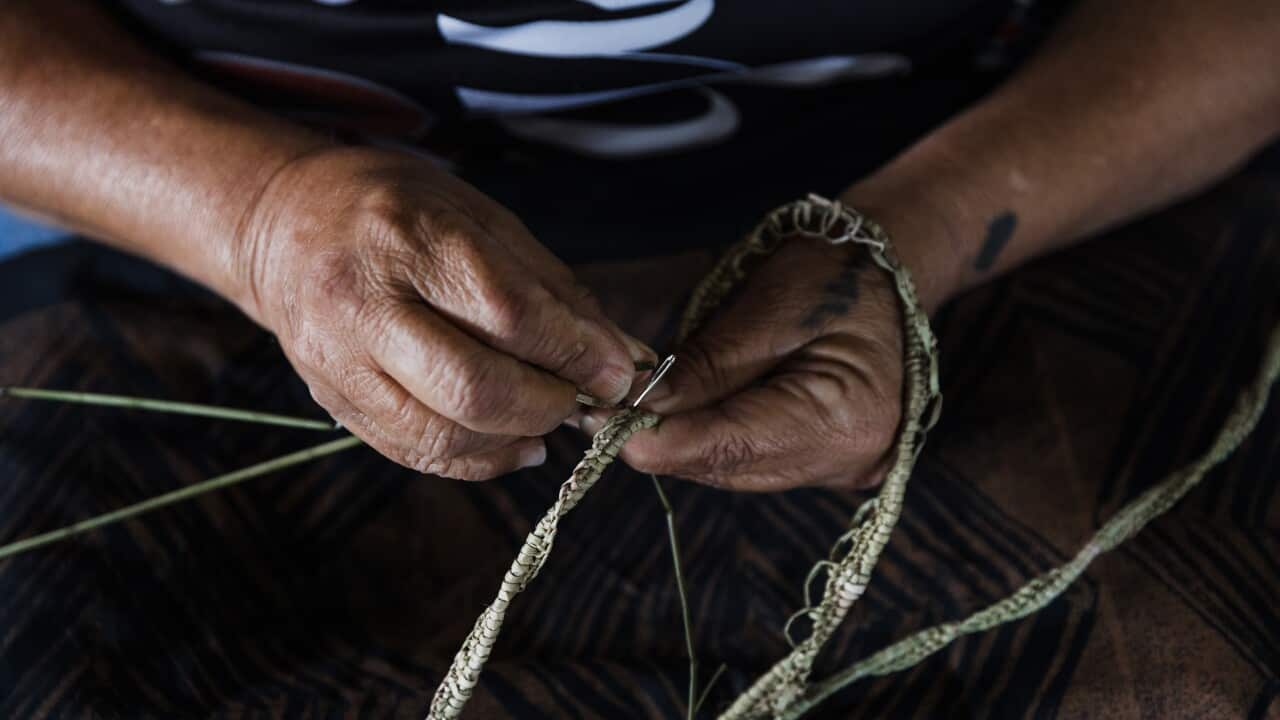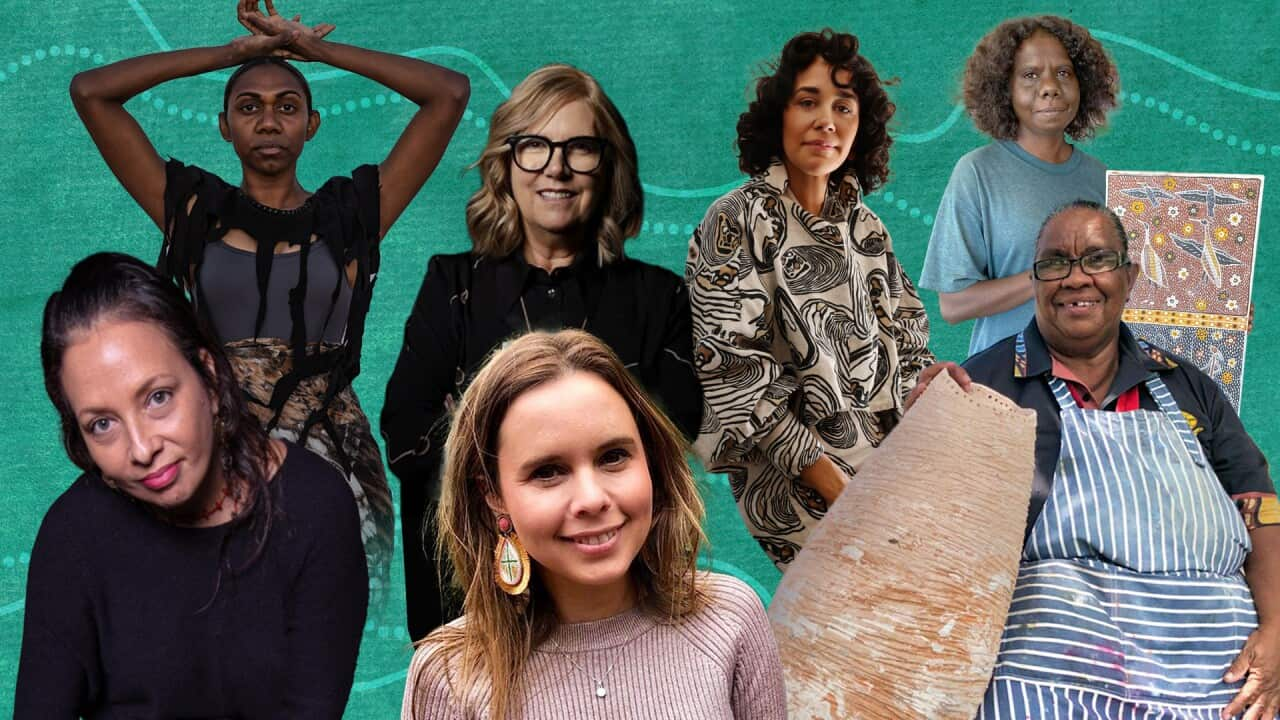For Bundjalung artist Kylie Caldwell, curating the Bulaan Buruugaa Ngali exhibition weaves together many different strands.
Threads of her own practice and obsession with weaving, parts of her cultural identity and history and woven together with revitalising an ancient craft with other Bundjalung women.
The Bulaan Buruugaa Ngali (We Weave Together) exhibition, presented by Arts Northern Rivers, will showcase nine ancestral woven objects, held in the Australian Museum collection and returning to Country for the exhibition, with 10 newly-commissioned works by contemporary Bundjalung, Yaegl, Gumbaynggirr, and Kamilaroi (Gamilaroi) artists, who have drawn from their great grandmothers' wisdom to breathe new life into ancient weaving traditions.
“With a basket, you're weaving many strands together, and you're making something whole,” Caldwell tells NITV.
“So there's that beautiful metaphor that is kind of like us in action, making a basket together and weaving a community together, connecting to one another more than we had and bringing strands together from different places.”
Caldwell, who is also a visual artist working across a wide range of forms, has been passionate about weaving for a long time.
“I started weaving and became really obsessed with it,” she said.
“So to be able to bring to life an exhibition that tells the story of the reclamation of weaving within Bundjalung it’s hard to find the words to explain how much of an honour and a privilege it is.
“It’s so exciting to see this journey of weaving grow and see community embrace weaving, there are more weavers now that we have on Country who enjoy, share and appreciate this ancient practice of our grandmothers.”

Bundjalung woman Kylie Caldwell has curated the Bulaan Buruugaa Ngali exhibition, which celebrates weaving. Credit: Brendan Blacklock Blacklock Media
“It's been really good to connect to these baskets that are locked away in large cultural institutions that … are often unseen,” Caldwell said.
“They have very limited contact for local mob from where they come from so having more exposure, more people seeing them, letting our kids see them and connecting to our grandmothers’ stories and their history.
“What beautiful belongings they made that are centuries old.
“I’m grateful that they've been able to preserve them for so long and look after them.
“They are our books, our connections to history, our story.”

Bundjalung Ancestral Baskets, Australian Museum Collection. Credit: Image courtesy of the Australian Museum
On Bundjalung Country the rush grass lomandra, which also has medicinal purposes, is one of the important fibres.
“Getting to know the plants and the different qualities that they have, like the lovely lomandra, which is so strong and versatile and accessible, takes a while,” Caldwell said.
“Once you get to know how to use lomandra you learn to love and appreciate, but also, nowadays, whether it’s practical or for aesthetic things it’s really important to the environment as well.
“When you learn to work with your natural fibres, you learn to work with the environment they come from too and get to know who else is sharing that plant, like the caterpillar, the little fledglings, all those animals that live with this plant and role it has.
“Many of our weaving plants have really important roles in water care, water health, the quality of water, protecting our river, so it's a reconnection to all those links that we had back in the day.”

Kyra Togo with her work for the Bulaan Buruugaa Ngali exhibition. Credit: Kate Holmes Photographer
“Back in the day, they made those items to carry things – they were practical, everyday items and now they’ve become our valued possessions because they had that strong skillset that we celebrate,” Caldwell said.
“The work towards revitalising weaving and learning those skills take time and is very much supported by Elders and weavers sharing; sharing knowledge and plants and woven items they have made.”
Bundjalung artist, weaver and Elder Margaret Torrens is the longest standing member of Casino Wake Up Time, a collective of Aboriginal women who have been meeting and weaving for more than 10 years, first established by her mother Phyllis Caldwell.
Margaret’s adorned work ‘Place of Tall Pines’, made of Bangalow palm sheaths and white ochre, refers to Mallanganee, where her mother grew up.
Margaret celebrates her mother's story of raising a family of 14 and memories of growing up in Mallanganee, in a small shanty hut near the creek, where they spent most of the summer swimming.
Also included in the exhibition is the work ‘Slumber Party 2022’ by Casino Wake Up Time, commissioned by the 23rd Biennale of Sydney and Create Australia.
Bundjalung/Yaegl artist Krystal Randall's process has been focussed on woven cultural wear.
Her work ‘Dyinda on Country’ uses raffia, emu feathers and paper.

Krystal Randall's work for the Bulaan Buruugaa Ngali exhibition by Arts Northern Rivers. Credit: Kate Holmes
Arts and cultural leader Rhoda Roberts is a practising weaver as well as festival director, curator, writer, performer and broadcaster and Elder in residence at NITV.
Roberts and Caldwell wrote a book together about preserving weaving practices of Bundjalung women, which was a catalyst for the exhibition.
READ MORE

Women Weavers
Rhoda’s work in the exhibition ‘Continuous Persistence’ is made of lomandra, harvested on Country.
“Weaving is more than art, it’s an essence of the circular rhythm, that can be continuous and has been crafted from the provisions of Country,” she said.
"We have returned full circle, to the old ways where once our grandmothers gathered, under the trees weaving.
"As I lie back with our children, we are reminded under the dappled shade that every leaf, and every star is an ancestor."
Bulaan Buruugaa Ngali exhibition, presented by Arts Northern Rivers, will be shared across three regional galleries on Bundjalung Country, from Saturday, December 21, 2024 - February 9, 2025; Tweed, February 22 - April 27, and Lismore, September 12 - November 9.








